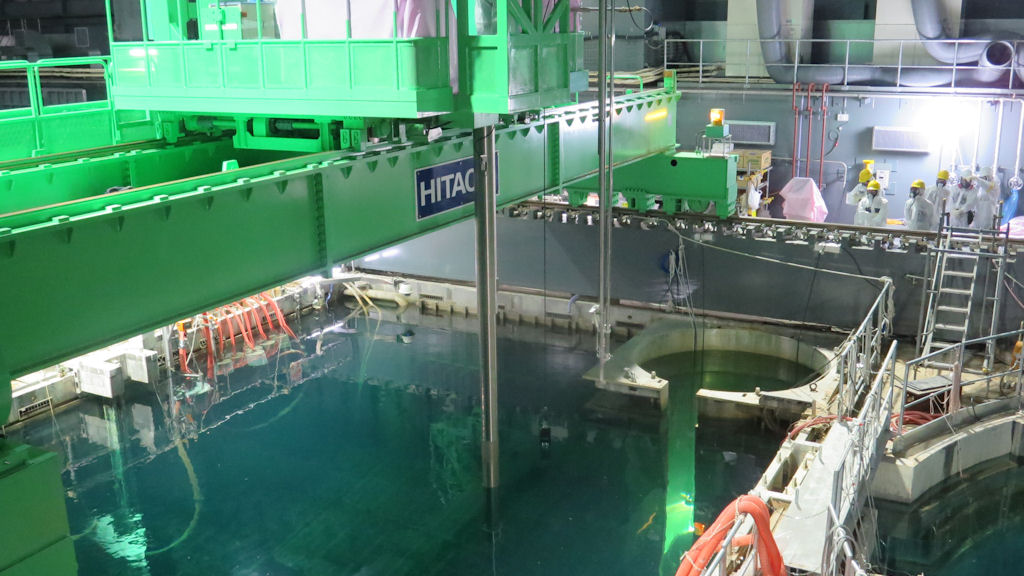First day of risky fuel removal at Fukushima a ‘success’
It was seen as the riskiest operation at Japan’s stricken Fukushima Daiichi nuclear plant since the March 2011 tsunami – but the plant’s operator says the first fuel removals have begun safely.

Tokyo Electric Power Company (Tepco), the operator of Fukushima, said that it had moved the first spent fuel assemblies from the fuel pool at reactor four without mishap.
Tepco president Naomi Hirose described it as a “significant first step” and pledged to continue the work “with the highest levels of health and safety of our workers, the population and the environment”.
Moving the spent fuel out of reactor four is seen as critical for the safety of the damaged nuclear plant for a number of reasons. Firstly, it’s the first step towards long-term decommissioning, rather than immediate emergency management.
Read more from Channel 4 News on Fukushima
The process itself is also dangerous. It’s normally a routine procedure, but not in a scenario when the nuclear plant is as badly devastated as Fukushima Daiichi was after the March 2011 earthquake and tsunami. However it was a process which had to be undertaken – experts warned that the consequences if the plant was struck by another earthquake with the fuel in the damaged reactor building, which was not operational at the time of the initial quake, could have been dire.
Moving all of the fuel into the safer storage pool is expected to take until the end of 2014. The wider decomissioning process, including extracting all the spent fuel, removing fuel debris, and the ultimate making safe of the facility, is expected to take decades and cost billions.
So for Tepco, as its president described, this is just the first step – but it’s also a positive one, bringing the company its first bit of good news for some time after months of reports of leaks, tanks secured by duct tape and even calls for the government to take over at Fukushima completely after it stepped in with funding earlier this year to help prevent radioactive water leaks.